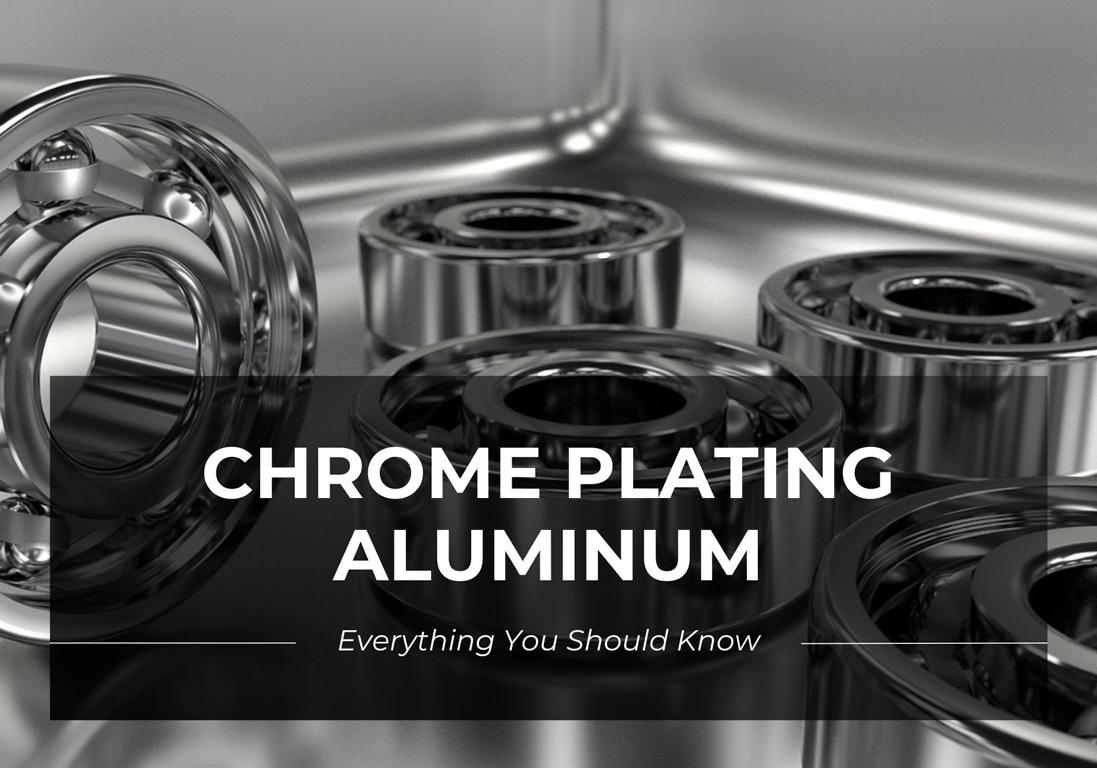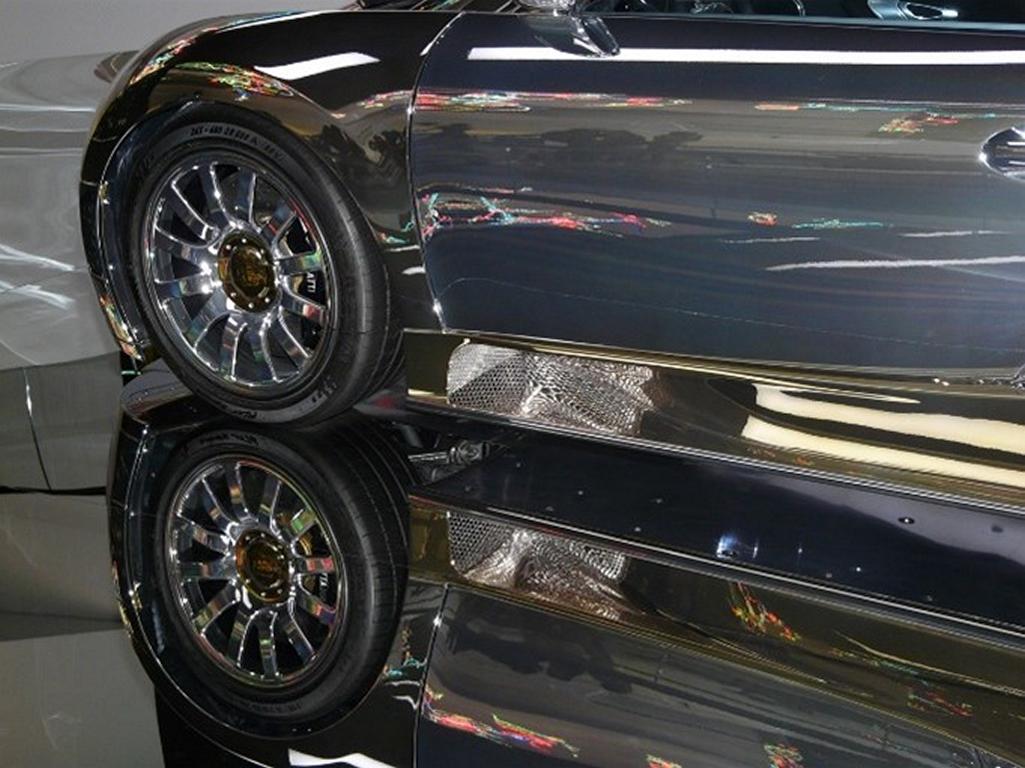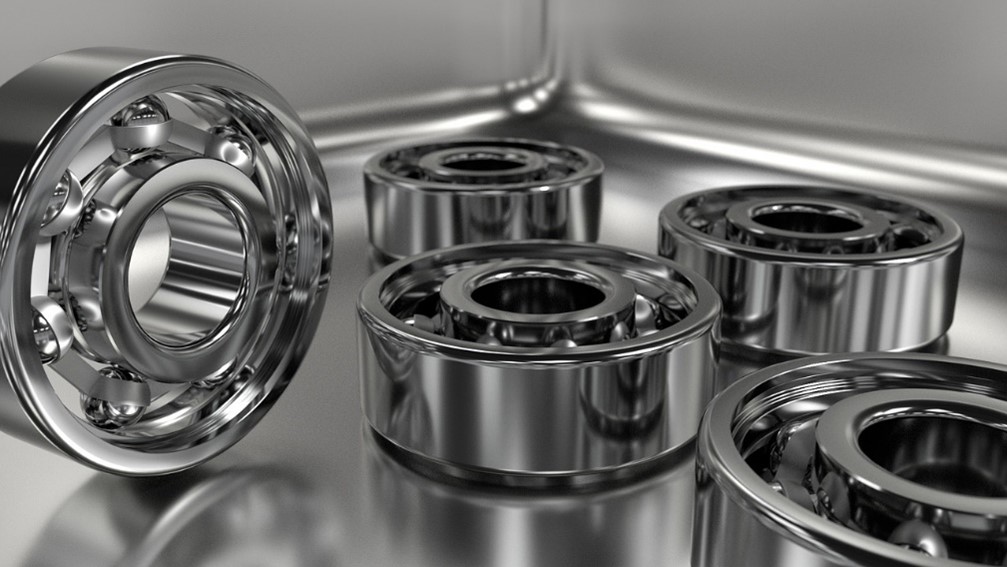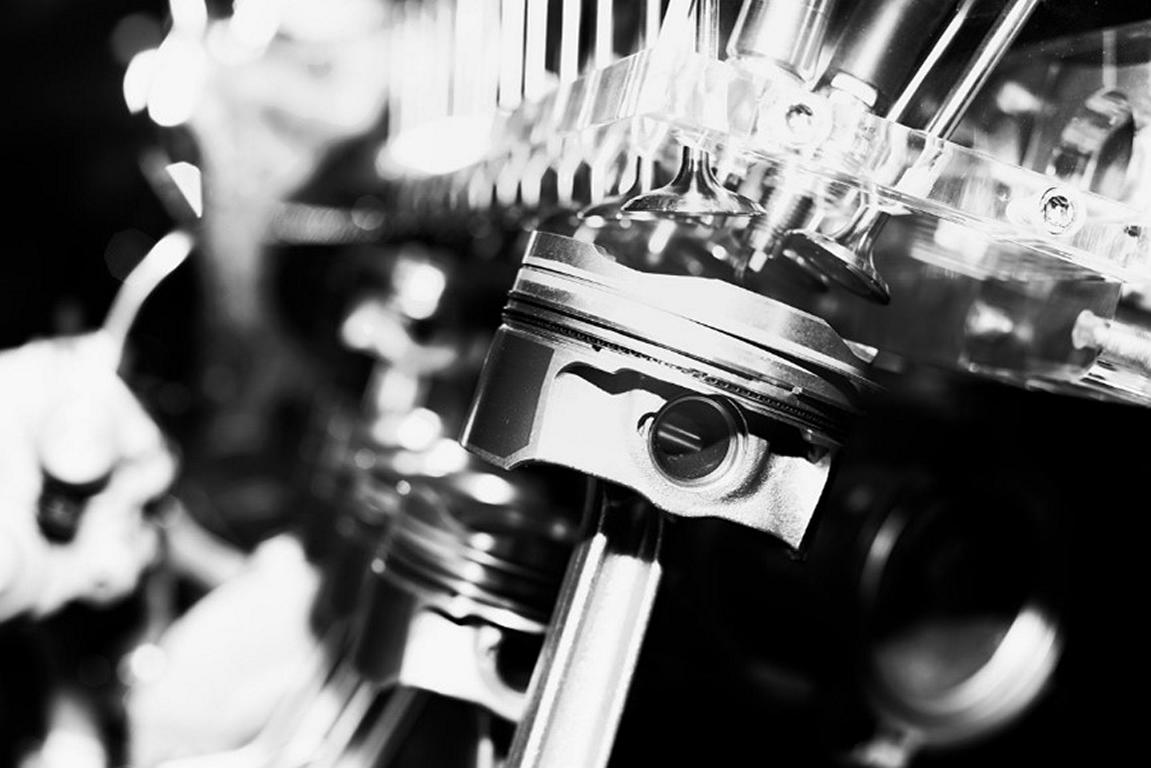Looking for a suitable surface finish for your aluminum parts? Try chrome plating aluminum. It is an excellent way to create high-quality aluminum parts.
Chrome-plating aluminum parts are widely used in many applications. It offers a wide range of benefits. It makes your metal part corrosion-resistant. As a result, you can think of a wide range of aluminum parts that can be used in harsh environments. Most importantly, chrome plating gives your aluminum part a unique, shiny look.
This article is about chrome plating aluminum. You will learn its purposes, benefits, applications, and how aluminum chrome plating is made. However, this article also gives several solutions for removing the chrome layer from a metal part. Overall, this article will be a convenient guide for you.
What is Chrome Plating Aluminum?
Chrome plating has many names. Some call it chrome dipping, while others call it chrome finish, electroplating, and more. Whatever the name, the technology is the same.
Chrome plating is a trendy method for finishing metal surfaces. It generally creates a layer of chrome through an electrolysis process.
You will need a chromic acid (H2CrO4) and sulfuric acid (H2SO4) solution for this process. You can create chromic acid by dissolving Chromium Trioxide (CrO3) in water.
Then, you will need two electrodes to pass the electricity into this solution. One is the cathode, your aluminum part, and the other is the anode. When electricity is passed through, the chrome ion attaches to the aluminum part and creates a layer. In this way, a certain thickness of chrome layer is made.
Chrome plating is extensively used across various industries. The specific use of chrome plating depends on the type. The particular use will be highlighted in the later sections.
Why Choose Chrome Plating for Aluminum
There are several reasons why you should choose chrome plating aluminum. The quality of the metal’s surface is very important in many situations. It affects both appearance and performance. Because of this, it is always important to have high-quality surface finishing.
- Chrome plating improves the aluminum look. It gives your metal part a shiny and reflective finish.
- This method also offers excellent corrosion resistance. As a result, plated aluminum works great in harsh environments.
- Chrome plating also gives your metal part a long lifespan.
- Aluminum chrome plating parts reduce friction and are suitable for many uses.
- Aluminum chrome plating parts also work great against wear and scratches.
Types of Aluminum Chrome Plating & Their Wide Applications
When it comes to chrome plating on aluminum, you have several options. Each type of chrome plating offers unique benefits. In this section, we will find out those benefits and applications so that you can choose the correct type for your project.
Type #1 Hard Chrome Plating on Aluminum
Hard chrome plating aluminum usually comes with a hard chrome layer. There are four types: micro-cracked, micro-porous, porous, and crack-free. All these types are known for their hardness and durability. The usual thickness of this layer ranges from 0.020 to 0.127mm.
Hard chrome plating makes aluminum parts resistant to wear and tear. They are durable and reduce friction. Because of this, hard chrome plating aluminum is ideal for moving parts. Indeed, they are highly corrosion-resistant. Due to the hard chrome layer, they can withstand high temperatures.
Specific Applications and Products
- Parts of an airplane’s landing gear
- Automotive engine parts, gears, and bearings
- Molds, cutting tools, and dies for increased lifespan
- Several marine parts
Type #2 Decorative Chrome Plating Aluminum
Decorative chrome plating aluminum has a thin chrome layer. The primary purpose of this chrome finish is to give it a shiny look. These chrome finish parts give a high-glossy finish. It mainly improves the visual appeal.
Like other types, they also have basic corrosion resistance. You can use these metal parts in low-intensity environments. They also protect underlying aluminum. Overall, they are easy to clean and maintain.
Specific Applications and Products
- Grilles, trims from car parts
- Faucets, handles of household fixtures
- Phone and computer cases
- Bicycle frames and handlebars
Type #3 Thin Dense Chrome Plating Aluminum
This chrome dipping method creates a thin but strong chrome layer on the aluminum parts. This type of chrome plating generally facilitates lubricity. The process of making these chrome-plating aluminum parts is the same as that of other parts. The thickness of thin, dense chrome plating aluminum ranges from 0.005 to 0.015mm.
This chrome finish offers high hardness and a low friction guarantee. Its dense microstructure provides a long-lasting result. Reasonably, the thin layers reduce weight. And, of course, they are corrosion-resistant.
Specific Applications and Products
- Precision instruments
- Engine parts that need low-friction, like pistons, camshafts, brake calipers
- Electronics: connectors, switches, and contact points
- Industrial machinery: Shafts, rollers and molds
Type #4 Flash Chrome Plating Aluminum
Flash chrome plating creates a very thin chrome layer, ranging from 0.005mm to 0.012mm. This chrome plating of aluminum also gives it a shiny, smooth finish. This chrome plating is an entirely decorative process, mostly used in the jewelry industry. These aluminum parts are mostly low-cost consumer products.
Moreover, flash chrome plating aluminum is also used to make decorative items. You may often find it in bathroom fixtures and household ornaments.
Type #5 Black Chrome Plating Aluminum
Finally, black chrome plating aluminum is another decorative item. As the name suggests, this chrome plating gives a sleek and shiny finish in black color. This method provides relatively strong corrosion resistance. Go to nickel plating cost.
Because of this, they are usually better than flash chrome plating. Although it is relatively costlier.
Specific Application and Products
- Car trims, wheels, and accessories
- Firearms and gun components
- Jewelry, nails, and consumer electronics
- Sports items, like golf sticks
- Bathroom faucets and many decorative fixtures
Chrome Plating Aluminum: Step by Step Process
Chrome plating aluminum is a lengthy and detailed process. It is a combination of several cleaning and electrolysis methods. For aluminum, it mainly follows nine steps. Each step is crucial for high-quality aluminum chrome plating. In addition, each step prepares your aluminum part for better adhesion and a flawless finish.
Note that you must select the correct cleaning methods. It is crucial for perfect adhesion during electrolysis.
Chrome plating aluminum involves chemical cleaning. So, precaution is a must, both for you and the environment. Wear safety gear, like gloves, goggles, and clothes. For environmental safety, ensure the correct disposal of chemicals.
Step #1 Surface Preparation
The first step of aluminum chrome plating is preparing the surface. This step may involve degreasing and mechanical cleaning. But before that, check for any defects on the aluminum part. Are there scratches, dents, or contaminants? Identify the area that needs special attention during cleaning.
Next, degrease the aluminum part to remove oils, grease, or other residues. In this case, use alkaline or solvent-based degrease. We often recommend alkaline cleaners. Mild pH or silicate rust inhibitors are your options. However, you can also use other methods, like ultrasonic cleaning, vapor degreasing, or manual cleaning.
Some mechanical ways to clean are blasting, grinding, or sanding. Since aluminum is a soft metal, this cleaning might create scratches or dents. Therefore, pick the right way to clean to get the best results.
Step #2 Polishing or Buffing
After cleaning the aluminum part, other methods are still needed to make the surface smoother. Polishing or buffing plays a crucial role in this case.
Polishing or buffing in chrome-plating aluminum creates a smooth and even surface. This helps the chrome layer adhere better. Eventually, you can achieve a high-quality chrome finish.
You can use a wide range of materials to do this. People mostly use abrasive brushes, sandpaper, and polishing compounds. You can either do it by hand or by a rotating machine.
The proper way to polish or buff aluminum is to maintain consistent pressure. Choose a coarse abrasive to remove significant imperfections. Gradually move to finer abrasives for a smooth finish. Follow up with a polishing compound and a soft buffing wheel to achieve a mirror-like shine for the best result.
Step #3 Chemical Cleaning
There are several chemical cleaning methods for chrome plating aluminum. Each method has unique benefits.
Alkaline cleaning is typical for most aluminum chrome plating jobs. In this process, the aluminum part is immersed in an alkaline solution. Depending on the seriousness, it usually takes a few minutes to a few hours. During the bath, the solution dissolves oils and grease. Alkaline cleaning is an easy-to-apply and effective method.
Another popular method is anodic electro-cleaning. As the name suggests, it is an electrolysis process that mainly cleans surface oxides. This method is typically used for complex metal parts.
Solvent cleaning is another famous method. As the name suggests, this cleaning uses various solvents. People often use acetone, isopropyl alcohol, or proprietary degreasers. These solvents also remove oil or grease from the metal surface.
However, there are other methods as well. You can choose any of them depending on your project needs.
Step #4 Rinsing
Rinse means wash. It is a supporting cleaning type, mainly with water to remove chemicals. In chrome plating aluminum, rinsing is essential. You may wonder why that is. As you know, multiple steps are performed in aluminum chrome plating. Consequently, rinsing is also performed after each of these steps.
Step #5 Electro etching or Activation
Once you are done washing, put the metal part in a solution for electro-etching and apply an electric current to it. This process mainly creates a micro-roughed surface on the metal part. Note that this surface is generally necessary for perfect adhesion.
Later, you must do activation. For this job, you will need a zincate solution. Gently immerse the metal part in the solution. This will form a thin zinc layer on the part, which mainly helps in copper and nickel plating.
Note that some chrome plating adds copper plating before nickel plating. This improves the overall quality of the metal part. The plating is the same as another electrolysis process; the only difference is the solution used.
Step #6 Rinsing
Again, wash your aluminum part with water. This step will remove residual electro-etching or zincate solution.
Perform rinsing several cycles. Always use fresh, deionized water. Carefully observe your metal part for any residual leftover.
Step #7 Chrome Plate Bathing
This step is necessary for aluminum chrome plating, whether or not you have done copper plating. In this case, nickel strike helps you do that. Apply a thin layer of nickel to the copper-plated part. You can also call it an intermediate layer.
After adding the nickel layer, immerse the part in a chrome plating bath. This bath contains chromic and sulfuric acids, and you must maintain the bath at the correct temperature. Move the solution around to make sure it’s spread out evenly. Run a controlled current of electricity through the bath.
Step #8 Apply Plating Current Until the Aluminum Part Achieve Desired Thickness
This step must be conducted while bathing. Apply a controlled electrical current to the aluminum part. Some current densities are recommended. So, always follow these instructions to get the desired result. Note that the application time and current density depend on the plating thickness.
Check to see how thick the chrome layer is. You can use different methods, such as ultrasonic thickness measures or micrometers. Based on what you find, change the plating time and current. This helps you get a good finish in a professional sense.
Step #9 Rinsing
Once again, wash the plated part thoroughly with deionized water to remove any residual plating solution. Multiple rinses may be needed to ensure all residues are gone. You can also use an alkaline solution as an alternative. This generally neutralizes any remaining acids.
After washing or rinsing, dry the aluminum part. In this case, you can use air blowers, heat, or other suitable methods. All you need to do is ensure the aluminum is completely dry before handling or further processing.
Chrome Restoration Techniques: How to Restore Chrome Plating Aluminum
Nothing is inhabitable. Even though chrome plating metal makes it last longer, chrome restorations may still be needed. Even if you chrome plate your metal, it can still rust, dent, or get other damage over time. The following are typical situations you may face with chrome-plating aluminum parts. We will generalize the chrome restoration process.
Situation #1 Normal Dirt
Usually, your chrome plating aluminum may build up dirt. You can follow up on some simple cleaning techniques in such a situation. In this case, you can clean it with a soft cloth or sponge with mild soap. In addition, you can use warm water to clean the affected area gently. Try to avoid abrasive cleaners.
Rinse thoroughly with clean water to remove soap residue. After washing, dry the surface thoroughly with a soft, lint-free cloth. You can also use an air dryer or heat.
Situation #2 Grease or Fingerprints
Car handles, wheels, ovens, water taps, and furniture may sometimes have grease or fingerprints. To clean these parts, you can follow the previous methods. However, for intense grease problems, you can use a mix of equal vinegar and water. After that, polish with chrome plating aluminum with soft cloth.
Situation #3 Soap Scum or Chemical Damage
For this type of problem, you can use an all-purpose dishwashing cleanser. You can also use lemon. A similar result can also be achieved by using water with vinegar. However, do not use abrasive cloths.
Situation #4 Corrosion & Rust
Usually, experts recommend one excellent solution for this type of problem. You can use aluminum foil dipped in water or white vinegar. Then, gently rub over the rusted spot. Alternatively, you can also use cola in your house. As you know, cola has a certain amount of phosphoric acid, an ideal cleaning agent.
Some experts also suggest to use lime juice and vinegar. Although, for severe cases, you may have to look for re-chrome plating.
Situation #5 Rust Bubbles & Blisters
For this type of problem, you can also follow the previous chrome restoration method. However, you can buy metal polishing products if the rust marks are too big. You can sand them and create a smooth texture if it is small.
Situation #6 Dulling & Loss of Shine
Using a microfiber cloth or olive oil, you can quickly restore the shininess of chrome-plating aluminum. If you have a Chrome cleaner, that would be the best solution. However, if olive oil is expensive, you can also try a mix of baking soda and water paste. Take some with a soft cloth and rub on the metal parts. Do it multiple times, and you will achieve a better result.
Situation #7 Scratches, Dents & Surface Damage
For this type of issue, you must first assess the area. If the scratches or dents are small, you can polish them using aluminum foil, as we have mentioned for rust bubbles. However, you will need a special chrome polishing agent if the scratch is larger. Note that when you use the polish, you must follow the instructions.
How to Remove Aluminum Chrome Plating?
Although it takes a few days to create aluminum chrome plating, removing it takes only a few minutes. You can even do it in several ways. Each method offers unique benefits. The correct type usually depends on specific situations.
Method #1 Using Cleaning Machinery
There are two common types of cleaning machinery. You can use any of them to remove aluminum chrome plating. The first is an abrasive blaster, and the other is an ultrasonic cleaner.
An abrasive blaster uses fine-grit abrasives propelled at high speed. First, prepare the chrome plating aluminum. Then, wear safety gear. Then, start the device and start shooting the abrasives on the metal part. This process will gradually wear away the chrome layer. In this way, you can achieve a good cleaning result.
Note that an abrasive blaster may be effective but may damage your aluminum part. As you know, aluminum is a soft metal, so high pressures can affect its structure. Therefore, an abrasive blaster is suitable for hard metals.
Another popular method is an ultrasonic cleaner. This method is gentle yet effective. First, place the chrome-plated aluminum in a tank filled with a specialized cleaning solution. Next, start the device. It will make high-frequency vibrations, creating millions of tiny bubbles. Usually, these bubbles pop on the chrome-plated surface, removing it from the metal surface. It is very suitable for cleaning aluminum parts.
Method #2 Using Chemical Solutions
If you don’t want to operate machinery, try chemical cleaning. There are three methods: using HCL, NaOH, and reverse electroplating.
Using Hydrochloric Acid OR Sodium Hydroxide
First, using hydrochloric acid is a very effective method. Since it’s an aggressive chemical, you must focus on safety gear. First, dilute the acid with water. Always keep the concentration level from 30% to 40%. Note that a high concentration may damage your metal part. Then, you can either use a brush or an immersion tank to clean the chrome plating aluminum part. Using a brush, gently apply the dilute solution to the metal surface.
Well, we recommend the immersion process. DO NOT immerse your metal parts for a long time. Seek professional assistance for appropriate timing.
Second, you can also use sodium hydroxide (NaOH). Like the previous method, you can follow the same steps for this, using sodium hydroxide instead of acid.
Reverse Electroplating
First, prepare the electrolyte solution. You should mix chromic acid, hydrochloric acid, and distilled water in this case. Next, put it in the immersion tank. Then heat it to 95 to 115 degrees Celsius. Pass the negative current through the chrome plating aluminum. In this case, the DC low voltage and current are applied. This will gradually dissolve the chrome plating.
Once the chrome is removed, wash it using deionized water. Fry it thoroughly. Finally, dispose of the electrolyte solution safely.
Which Method is the Best for Aluminum Chrome Plating Removal
Experts say using a hydrochloric acid solution is the fastest and easiest method. Other methods are usually complex to operate. However, in most cases, an HCL solution is used to chrome-plate aluminum.
Chrome Plating Aluminum Near Me: Contact Us Today
Are you looking for a reliable chrome plating aluminum near me service as your location? Contact us today! We offer all types of aluminum surface finish services to worlwide. We specialize in chrome plating for aluminum.
If you have any questions, contact our customer support team. Our team is very professional and always happy to answer them. So, Let’s discuss your project.









0 Comments